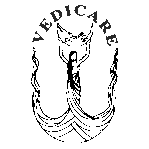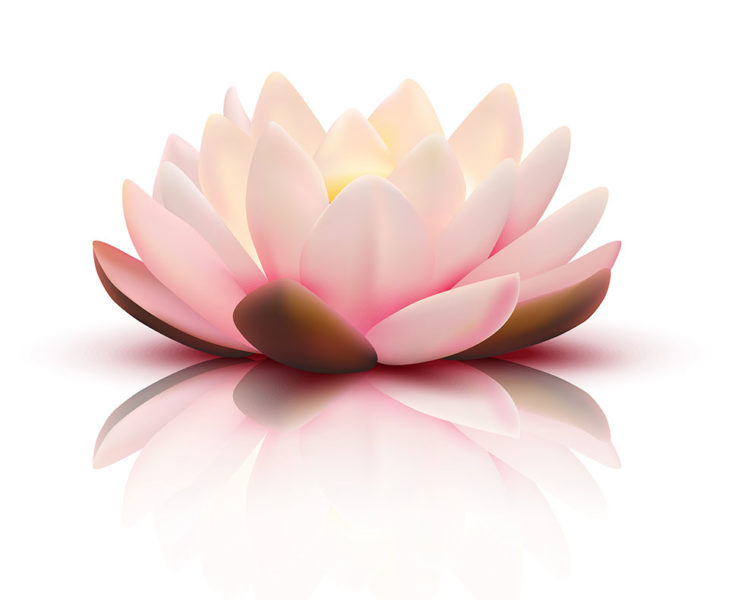Every individual is unique and because ayurveda treats the patient and not the disease it is essential to know the patient’s prakruti.
There are three DOSHAS known as VATA, PITTA and KAPHA and these DOSHAS harmonize the functions of each cell and are present in each cell. When the sperm and the ovum meet in your mother’s uterus, an embryo is created, the DOSHAS which are present inside and outside at that time are producing the PRAKRUTI; if the DOSHAS are in harmony, the baby will be in good health, if not, the foetus will not survive or will not be well formed.
When one or two of the three DOSHAS are slighly in excess, they will create a particular constitution on the physical and psychological level that will characterize a person and will never change.
There are 7 types of PRAKRUTI:
VATA
PITTA
KAPHA
VATA-PITTA
PITTA-KAPHA
VATA-KAPHA
SAMA
Knowing your prakruti is very important in ayurvedic diagnosis, because for example, a vata (air) person will tend to have vata disorders, the other type of sicknesses are rare for him or easy to dislodge. In order to prevent vata sicknesses, one should avoid food, drink and factors aggravating vata. In the same way a pitta (fire) person should be given remedies that are refreshing and a kapha (cold) type person should be given medicines that are heating. The prakruti are SATWIKA, RAJA and TAMAS. The concept of the mind is very important in ayurveda because it is always considered that an illness is physical and mental. Mental plays a dominant role in the cause of the disease. Psychological factors control the physiological functions in the body and vice versa. Consequently, even with the treatment of physical problems, some measures that act on the psyche are also prescribed.
DETAILED DESCRIPTION OF THE PRAKRUTIS
VATA : dry, light, cold, rough, subtle, mobile, clear, scatter
PITTA : oily, penetrating, hot, light, mobile, liquid, smell, sour
KAPHA : heavy, slow, cold, oily, viscous, dense, limp, motionless
VATA is often translated as wind, PITTA as bile and KAPHA as phlegm.
VATA balanced: Vibrant, lively, enthusiastic, flexible, imaginative, sensitive, talkative, extraverted, responsive. VATA unbalanced: Edgy, agitated, trouble with sleep, tendency to be over agitated, tired, constipated, anxious, worrying, loss of weight. What aggravates VATA: irregular routine, late nights, irregular meals, cold and dry climate, too much mental work, foods that are bitter or astringent, traveling, illness.
PITTA balanced: Warm, nice, caring, satisfaction of life in general, likes challenges, good digestion, bright skin, good concentration, precise and well articulated speech, courageous, intellectual, fast thinker.
PITTA unbalanced: Always demanding, perfectionist, frustration, angry, skin irruption, impatient, irritable, white hair or early balding. What aggravates PITTA: too much heat or sun exposure, alcohol, drug and cigarettes. Always being in a hurry, too much activity, too spicy and salty food, junk foods.
KAPHA balanced: Welcoming, forgives easily, compassionate, stable emotionally, relaxed, slow, methodical, good memory, stable, natural resistance to illnesses. KAPHA unbalanced: indifferent, inert, greasy skin, too much sleep, allergies, slow digestion, possessive, materialist, tendency to sleep too much and too gain weight.
What aggravate KAPHA: rest, too much food and sleep, insufficient exercise, not enough variety in life, heavy food, food that is too sweet, salty, bitter and unctuous, cold and humid climate.
THE GUNAS
According to ayurveda there are twenty base characteristics called GUNA that are classified in ten antagonistic pairs, for example hot and cold, slow and fast, humid and dry etc… Those opposite strengths function together. The universe in its whole is the manifestation of the two opposite bases, the male energy and the female energy. VATA, PITTA and KAPHA have their own characteristics and the substances that have similar attributes will have the tendency to agravate the corresponding DOSHAS, according to the law of the similar increasing the similar. For example the summer season has PITTA attributes, very hot, dry, light mobile and penetrating. Naturally in summer PITTA will be aggravated. The VATA season, light, subtle, dry, mobile, rough, cold is fall. KAPHA season liquid, heavy, cold, stiky, clowdy is winter.
The body characteristics can be changed in spite of the natural congenital tendency of the base constitution PRAKRUTI by consuming opposite attributes of someones’ constitution. For example if a VATA person eats exclusively KAPHA foods he will suppress the light VATA characteristic and modify it into KAPHA during this time without loosing its PRAKRUTI.
THE MENTAL CONSTITUTIONS
On the mental and astral plan, three attributes or GUNAS match with the three physical DOSHAS. They allow to distinguish the human constitutions and the individual differences to the morals and psychological dispositions.
The three attributes are:
SATTVA express essence, comprehension, purity, clarity, compassion and love. People with a peaceful temperament, a healthy body, a very pure consciousness, practice their beliefs and are often holy.
RAJAS implies movement, aggressiveness and extroversion. People with a rajassic temperament are interested by business, prosperity, power and prestige. They appreciate wealth and are extroverted. They can believe in god and suddenly change their beliefs. They are very political.
TAMAS manifest itself with ignorance, inertia, heaviness, slowness of the mind. Tamasic people are lazy, selfish and capable of destroying others. They generally have little respect for others and they don’t have any religion. All their activities are selfish.
The practice of spiritual discipline like yoga can modify the mental energy as well as Ayurveda because the Vaidya (physician) can help the patient in the choice of a more balanced mental and physical life style.
The GUNAS
1) The heavy GURU – increases KAPHA, decreases VATA and PATA. It increases the nutrition in volume, heaviness and generates slowness of the mind and lethargy.
2) The light LAGHU – increases VATA, PITTA and AGNI (fire), and decreases Kapha. It helps digestion, reduces volume, clean up and generates freshness, alertness and what is without basis.
3) The slowness MANDA – increases KAPHA, decreases VATA and PITTA. It generates laziness, slow action, relaxation and slowness.
4) The brusque TIKSHNA – increases VATA and PITTA, decreases KAPHA. It generates ulcers, perforation and has an immediate effect on the body. It promotes sharpness and rapidity of comprehension.
5) The cold SHITA – increases VATA and KAPHA, decrease PITTA. It generates cold, dullness, unconsciousness, contraction, fear and hardness.
6) The hot USHNA – increases PITTA and AGNI, decrease VATA and KAPHA. It generates heat, digestion, decontamination, expansion, inflammation, anger and hate.
7) The oily SNIGDHA – increases PITTA and KAPHA, decrease VATA and AGNI. It generates equality of the surface, humidity, lubrication, vigor, compassion and love.
8) The dry RUKSHA – increases VATA and AGNI, decreases PITTA and KAPHA. It increases dryness, absorption and constipation.
9) The viscous SLAKSHNA – increases PITTA and KAPHA, decreases VATA and AGNI. It decreases roughness and increases equality of the surface. It generates love and care for other.
10) The roughness KHARA – increases VATA and AGNI, decreases PITTA and KAPHA. It causes bones or skin to crack.
11) The thick SANDRA – increases KAPHA decreases VATA, PITTA and AGNI. It generates solidity, density and strength.
12) The liquid DRAVA – increases PITTA and KAPHA decreases VATA and AGNI. It dissolves and liquefies. It favors salivation, compassion and cohesion.
13) The inert MRUDU – increases PITTA and KAPHA, decreases VATA and AGNI. It generates softness and weakness.
14) The hard KATHINA – increases VATA and KAPHA decreases PITTA and AGNI. It increases la hardness, strength, rigidity selfishness, insensitivity and lack of heart.
15) The sattvic STHIRA – increases KAPHA decreases VATA PITTA and AGNI. It favors stability, obstruction, support, constipation and faith.
16) The mobile CHALA – increases VATA, PITTA and AGNI decreases KAPHA. It favors movement, instability, instability, nervous agitation and the lack of confidence.
17) The subtle SUKSHMA – increases VATA, PITTA and AGNI decreases KAPHA. It penetrates the subtle capillary and increases emotion and sensation.
18) The coarse STHULA – increases KAPHA decreases VATA, PITTA and AGNI. It causes obstruction and obesity.
19) The bleary AVILA – increases KAPHA decreases VATA, PITTA and AGNI. It heals fractures caused by opaqueness and lack of perception.
20) The clear VISHADA – increases VATA, PITTA and AGNI, decreases KAPHA. It pacifies and generates isolation and diversion.
Mental constitution
On the mental and astral plane 3 attributes or GUNAS correspond to the 3 humors that make up the physical constitution. In the ayurvedic system of medicine, these 3 attributes provide the basis for distinctions in human temperament and individual diifferences in psychological and moral dispositions.
The 3 basic Gunas are :
– SATTVA (adj : sattvic) expresses essence, understanding, purity, clarity, compassion and love. People of satvic temperament have healthy bodies and their behavior and consciousness is pure, they are religious and attain self-realization without much effort while rajas and tamasic people must make much more effort to attain this state.
– RAJAS (adj : rajasic) Rajas implies movement, aggressiveeness and extroversion. The raja mind operates on a sensual level. They are interested in business, prosperity, power, prestige and position. they can be religious but very political.
– TAMAS (adj : tamasic) manifests in ignorance, inertia, heaviness and dullness. Tamasic people are lazy, selfish and capable of destroying others. They have usually little respect for others and are not religious, all their activities are egoistical.
These 3 subtle mental energies are responsible for behavioral patterns, which may be altered and improved through the practice of spiritual disciplines such as yoga.
The 5 elements, the organs of senses and their actions :
Element Senses Sense organ Action Organ of action Ether Hearing Ear Speech Organs of speech tongue vocal cord mouth Air Touch Skin Holding Hand Fire Seeing Eyes Walking Feet Water Taste Tongue Procreation Genitals Earth Smell Nose Excretion Anus

